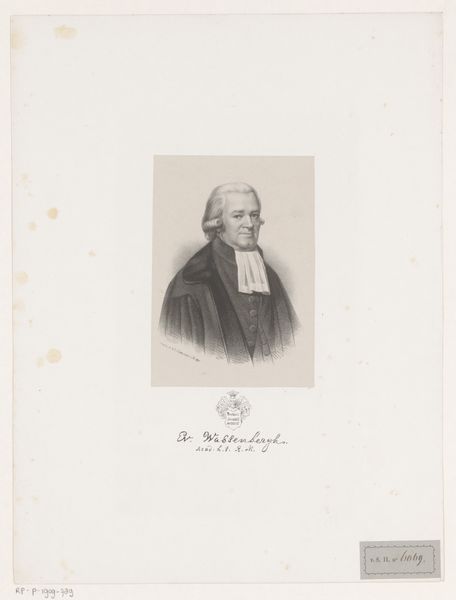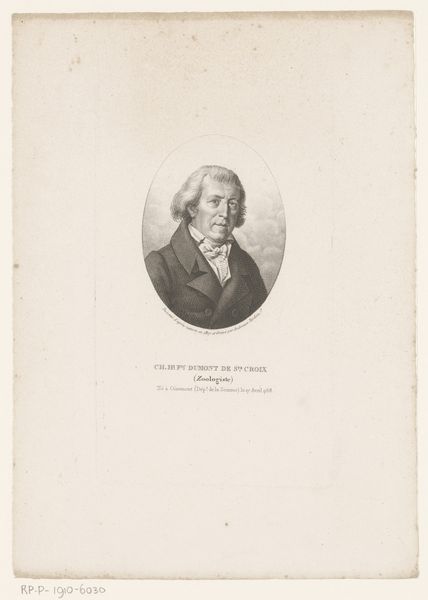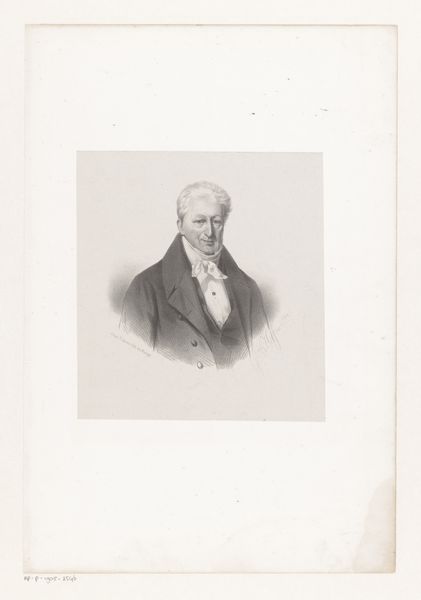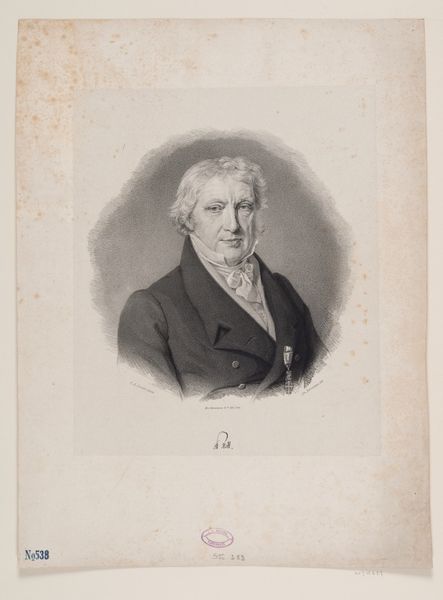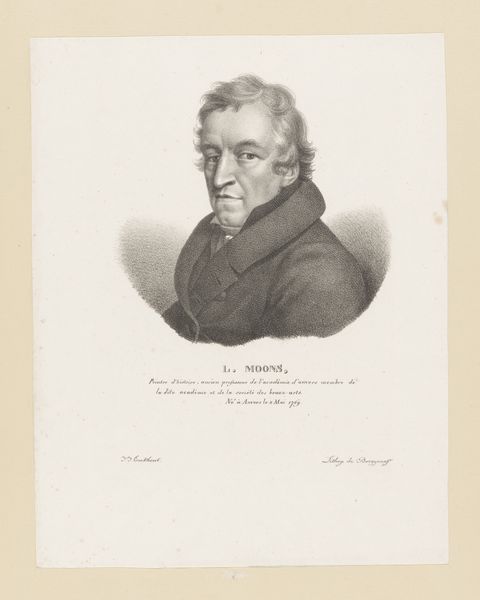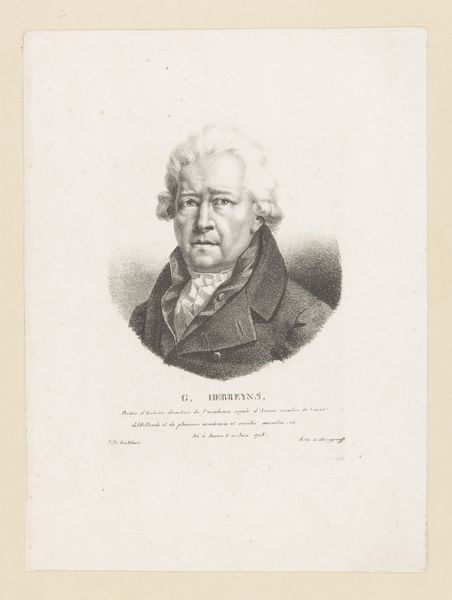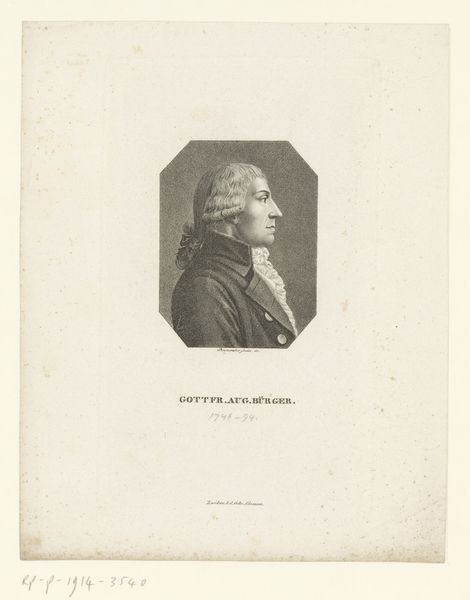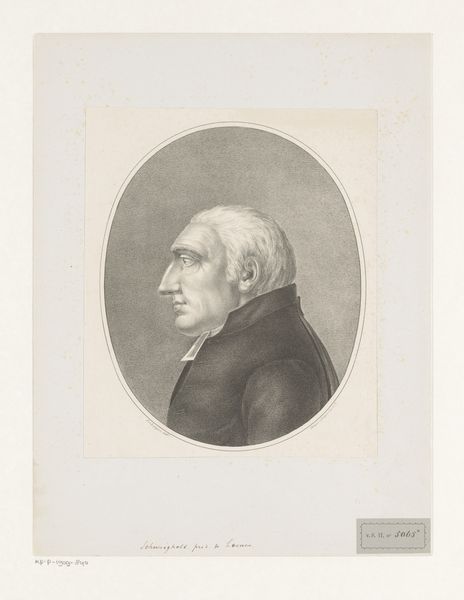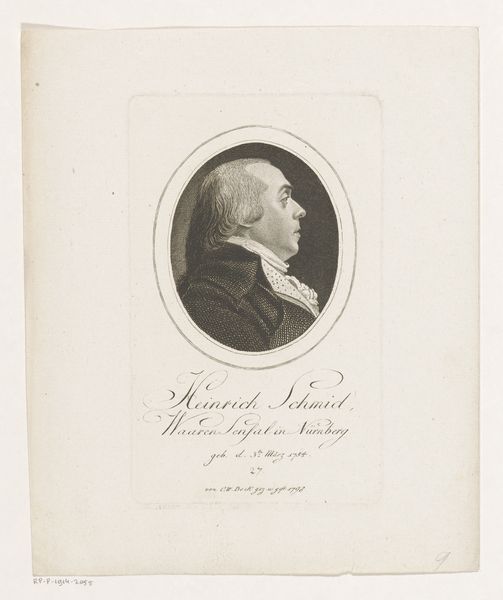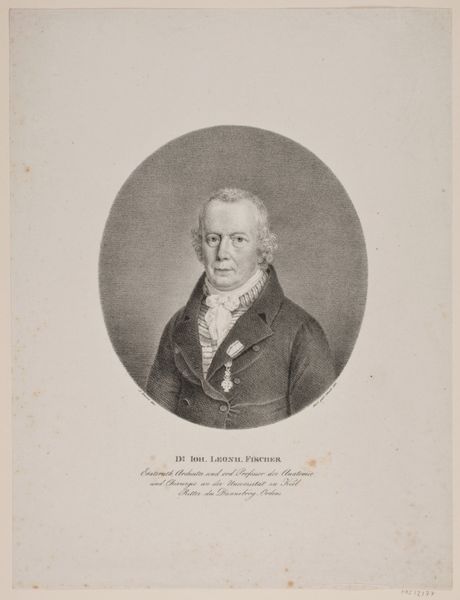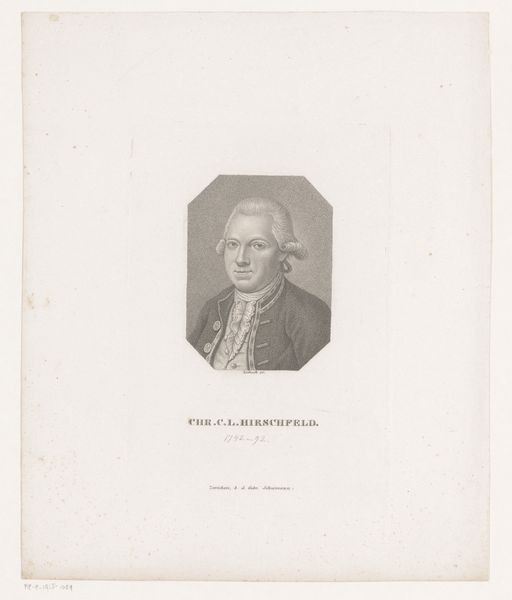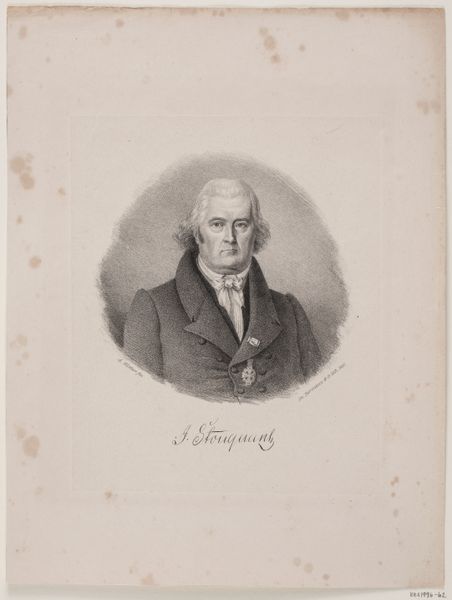
print, engraving
#
neoclacissism
# print
#
history-painting
#
engraving
Dimensions: height 215 mm, width 164 mm
Copyright: Rijks Museum: Open Domain
Curator: This engraving, likely crafted between 1820 and 1830, depicts Antoine-Alexandre Barbier. Its neoclassical style gives us a glimpse into the visual language of the time. Editor: My immediate impression is one of contained formality. The oval framing, the subject's rigid pose, it all speaks of a certain era of self-presentation and…dare I say, restraint. Curator: Restraint, yes, but also an aspiration towards order and reason that defined Neoclassicism. Look how the artist, Pierre Roch Vigneron, uses line and shading to create an impression of depth. The careful delineation of Barbier's features seems almost calculated to convey intellect and authority. It tells us a lot about how power and intellect were viewed. Editor: Agreed. It's less about capturing raw emotion and more about projecting a composed image. The high collar and carefully arranged hair—they are all signifiers, part of a visual vocabulary signaling status. Semiotics in action, really. And those tiny details, almost microscopic, used to convey volume! It really conveys materiality while staying entirely flat! Curator: Absolutely. Even Barbier's gaze, directed off to the side, avoids direct confrontation. This further adds to this persona he presents. The inscription below – “Chevalier de la Legion d’honneur” – shows us his values through association. He doesn’t need to explicitly state who he is; it’s implied through social meaning. Editor: I keep coming back to that framing. The oval acts as both a window and a barrier. It invites us to observe while simultaneously reminding us of the distance between the viewer and the subject. It contains Barbier, distilling him down to his essence, at least, the essence he and the artist wished to project. The visual compression amplifies the perceived prestige of the man contained inside. Curator: I find the print itself is such a telling artifact, revealing how important certain attributes were. Strength in leadership, refinement, control—things that persist in shaping leadership to this very day. Editor: A powerful encapsulation of its time. Focusing on the clean lines, structured form, and controlled textures makes me appreciate even further how a visual rhetoric has impacted the perception of those in power and authority over time.
Comments
No comments
Be the first to comment and join the conversation on the ultimate creative platform.
